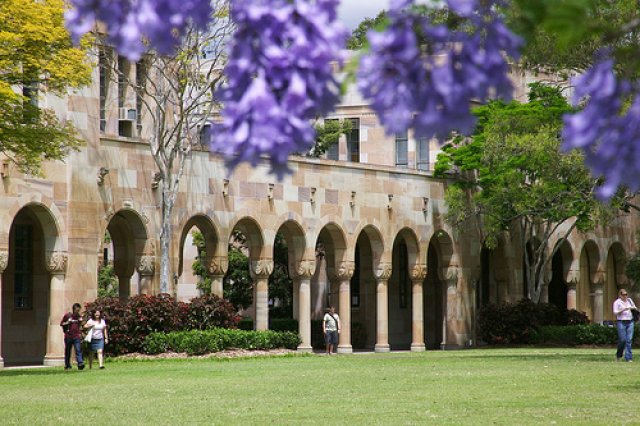
Prime Minister Julia Gillard is seeking to differentiate herself from ousted Kevin Rudd to show her promotion to PM is more than an attempt to re-badge a political party in crisis.
In this context, it is worth looking at her record in government. This is a look at the changes to and proposals for higher education launched by Gillard as education minister in Transforming Australia’s Higher Education System, the government’s proposed 10-year agenda for reforming the nation’s higher education system.
Education is designed to train people to meet specific needs. The proposed reforms show that a bulk system does not necessarily mean equal access or input. The changes will mean greater participation and increased funding for higher education, but education will serve the interests of private profits more than ever.
The policy puts forward participation and quality goals on the grounds that market demand for people with higher education qualifications will surpass supply from 2010. These goals are framed as necessary to produce labour power to meet market needs and enhance the ability to make money from higher education.
The report says higher education should have “the capacity to respond quickly to employers’ labour and skill needs” and that Australia should have “a quality higher education system to sustain the international education industry that is Australia’s third largest export”.
On attainment, it sets the goal of increasing the number of 25-34 year olds with a bachelor degree from the current 32% to 40% by 2025. On access, it sets the goal of raising the numbers of students from low socio-economic backgrounds enrolled in higher education from the current 15% to 20% by 2020.
The measures put forward to achieve these goals include new funding that is tied to meeting targets, a new demand-driven model of funding that attaches money to the student, and lifting the cap on enrolment numbers.
The reforms amount to deregulation of what is to be taught and to how many students. They create a for-profit model, where institutions must sell a product in order to gain funding. And they increase competition between providers to access performance funding.
Private interests require a skilled workforce and, indeed, this can mean opportunities for the people employed. However, Labor’s changes will further weaken social input into what is taught and what kind of needs Australia is educating people for.
The National Tertiary Education Union also raised concerns in 2009 about the new funding model. Its concerns included that institutions could be forced to put marketing ahead of quality education and choose not to offer higher cost or less popular courses to compete with other universities and maximise profits.
Better performing institutions will receive more funding to further improve, while struggling institutions will receive less and get worse comparatively. What one gains, another will lose.
Moreover, all of this funding will be made available to any accredited institution, private or public.
With private institutions already better resourced as a result of higher student fees, they will more easily be able to attract this funding. As a result, public money will follow students away from public institutions and public control. What’s more, it will flow to institutions that only are accessible to students who can afford to pay.
So, despite funding increases, a better-resourced education will be more available to those with money.
To monitor performance and make a distinction between providers, money has been budgeted to set up the Tertiary Education Quality and Standards Agency. It will increase consumer choice based on the standards monitored, but only for those who can afford it, deepening inequality.
It will also pressure universities to teach to measured outcomes, rather than to advance knowledge. Indeed, it could even lead to conflicting goals. For example, should a university enrol a person from a low socio-economic background who is over the age of 34, given the attainment targets apply to those under the age of 34?
The aims put forward in Transforming Australia’s Higher Education System are linked to Gillard’s perspectives for the whole Australian economy. These profit-first, neoliberal changes will simply make it harder for people to decide together, as a community, how to make life better.
They put Gillard in line with Rudd who, in a speech in early 2008, explained “the new Australian government is pro-market, pro-business and pro-globalisation”.
[Jess Moore is a Resistance national coordinator.]